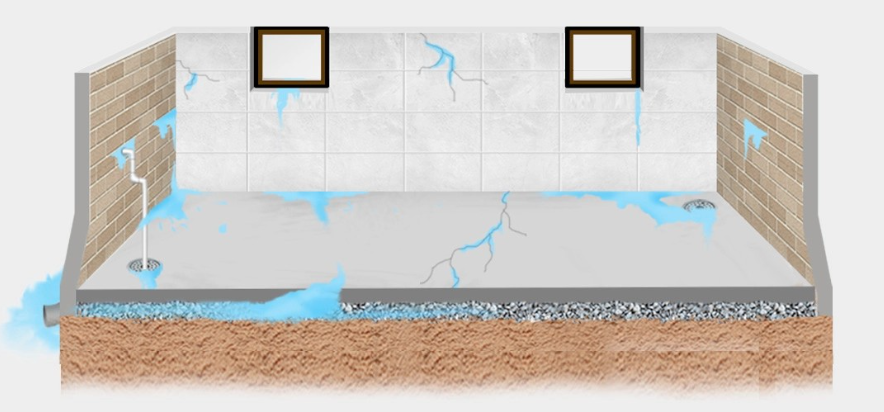Stop Basement Leaks Before They Start: A Toronto Waterproofing Guide

Understanding exterior waterproofing: Why it’s essential for Toronto homes
Protecting your home's foundation is not an option; it is a need in a city like Toronto, where the seasons change from severe winter snow to deluges of spring rain. The first line of defense against water entry, mold development, and expensive structural damage is exterior waterproofing.In the GTA, basements are especially susceptible. In the area, a large number of older homes were built without contemporary waterproofing techniques, and even more recent residences may experience issues with inadequate drainage, soil subsidence, or hydrostatic pressure. The most frequent causes of basement leaks include clogged weeping tiles, poorly positioned downspouts, foundation fissures, and poor grading throughout the house.Unlike interior waterproofing—which simply redirects water that has already entered the home— Exterior Waterproofing prevents water from breaching the structure in the first place. It not only prolongs the lifespan of your foundation but also helps preserve property value and indoor air quality. In fact, according to the Canadian Mortgage and Housing Corporation , over 50% of homes with basements in Ontario experience water-related issues during their lifespan.
Key methods of exterior waterproofing in Toronto
When it comes to waterproofing exteriors, there is no one-size-fits-all approach. Because of the soil type, topography, and age of the building, every Toronto property has different problems.
- Excavation and waterproof membranes : The most dependable approach is to dig up the soil surrounding the base of the house and apply a mixture of sealants and protective materials, such as bituminous coatings or dimpled plastic membranes. Water never comes into contact with the concrete walls thanks to this technique.
- Weeping tile and French drains : An adequate drainage system is essential. Modern waterproofing contractors use perforated piping, sometimes referred to as weeping tile, at the base of the foundation to redirect groundwater away from the building. French drains, gravel-filled trenches, are sometimes added for extra support.
- Surface water control : By extending downspouts 6–10 feet from the foundation and ensuring that the landscaping slopes away from the house, you can prevent puddling near the walls. Surprisingly, these small adjustments can reduce the risk of water intrusion by over 40%.
When is exterior waterproofing necessary?
Not all warning signs of moisture problems are dramatic. Sometimes, they’re easy to miss—until it’s too late.
- Subtle signs : The earliest signs of moisture leaking through the foundation are frequently small fissures, musty smells, and white, chalky residue on the basement walls (efflorescence).
- Obvious red flags : Standing water, visible mold, or crumbling concrete demand immediate attention.
In Toronto, the optimal time for undertaking exterior waterproofing is between late spring and early autumn when the soil is dry and more manageable. And in certain cases—like persistent leaks or homes situated below the water table—exterior solutions are not just recommended; they're essential.
Sump pumps: Your last line of defense against flooding
Unpredictable storms or quick snowmelt can overwhelm drainage systems, even with strong waterproofing. This is when sump pumps are useful. Sump pumps actively remove collected groundwater from the house when they are placed in the lowest area of a crawlspace or basement.There are two primary types:
- Submersible pumps : Installed inside the sump pit, these are quieter, space-efficient, and more powerful.
- Pedestal pumps : Situated above the pit, they are easier to service and less expensive, though louder in operation.
Many Toronto homeowners are now opting for models with battery backup systems —a must in a city where power outages can coincide with heavy rainfall. A reliable sump pump can prevent thousands of dollars in damage during one severe storm.
Professional sump pump installation in Toronto: What to expect
Site evaluation and planning : Technicians assess where water accumulates most and select an optimal pit location.
- Excavation and pit installation : A sump basin is installed at the lowest point of the foundation.
- Pump setup and testing : After installing the pump and check valve, discharge pipes are routed safely away from the home, often several feet from the foundation.
- Alarm and backup systems : High-quality systems include float alarms and battery packs for emergencies.
Maintenance tips for exterior waterproofing and sump pumps
Protect your investment having Waterproofing Company Toronto conducting regular checks:
- Inspect membranes and seals annually for signs of wear.
- Test your sump pump every few months by pouring water into the pit.
- Clean the system and ensure no debris clogs the pit or impedes the float switch.
If your pump runs continuously or makes unusual noises, it may be nearing the end of its lifespan. Likewise, sagging downspouts or cracks in the foundation should not be ignored.
Cost considerations for waterproofing and sump pump installation in Toronto
Cost is always a key concern. On average:
- Exterior waterproofing can range from $100 to $250 per linear foot. The total cost depends on excavation depth, wall condition, and accessibility.
- Sump pump installation generally costs between $1,200 and $3,500, depending on the system's complexity, quality, and whether battery backups are included.
Investing in these systems may seem expensive upfront, but they significantly reduce the risk of future water damage and insurance claims—some of which may not be fully covered by basic policies.